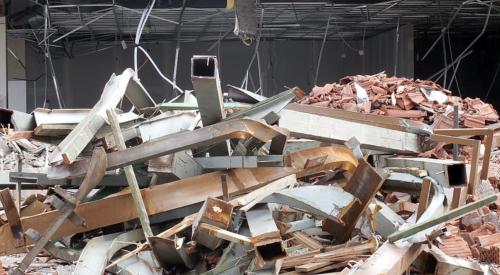| Highly expansive soils require a foundation system of piers up to 40 feet deep. |
Be it sandy or clay-based, dirt accounts for local and regional differences in foundation construction around the country. But experts say many builders rely too heavily on local practices — post-and-tension slabs in Texas, basements with spread footings in Illinois — rather than doing their homework on every lot.
Paying the upfront expense of topographical maps and soil engineering tests is the No. 1 way to protect against more costly surprises after digging begins, says former builder Chuck Shinn, president of the Lee Evans Group in Littleton, Colo.
“It is often a mystery when a builder digs a hole. All of a sudden they discover they’ve got different types of soils, even rock,” Shinn says. “That is where many of the cost variances in home building are — below the sill.”
Denver, with its notoriously expansive soils, is one place where builders have learned the hard way that soil testing is not optional. Today, says Ali K. Marvi of AKM Engineering Consultants, the debate among geo-technical engineers is over how many soil samples must be tested to ensure the best result. Two or more test holes are suggested on large lots, Marvi says.
“There are a number of soil types out there,” says Marvi, “but generally we find two types: the kind that consolidates and the kind that swells. Generally sand-based soils will give you the settlement, and the clay-based will give you the heaving or the swelling.”
Soil testing, beyond the developer’s preliminary soil report, is not cheap. For 50 or more lots, AKM Engineering charges about $500 per test hole. The price per test is higher for smaller groups of lots, rising to as much as $1,200 per test.
| A spread footing with minimum dead load reduces upward expansion pressures by using wax cardboard to create voids. |
The basic soil tests include:
1. Standard soil penetration test. A hydraulic hammer gauges how many swings it takes to bore a 30-inch hole with a hollow pipe.
2. Swell consolidation test. Water is added to a 2-inch core sample to gauge a percentage increase in size. A second phase involves determining how much pressure is required to push the sample back into its steel container.
3. Atterburg test. Determines plastic limits of soil.
4. Sulfide test. Checks the level of this corrosive in soils.
The most common type of shallow foundation is the spread footing. It works like a snowshoe, limiting compression of sand-based soils. Variations of it use void spaces to limit the gripping area in mildly expanding soil, Marvi says. Highly expansive soils require deep foundation systems of piers that reach below the lowest moisture penetration level of 15 to 20 feet. The deepest portions anchor the foundation against upper-level swelling pressures.
For more information on foundations, visit the American Society of Civil Engineers’ Web site at www.asce.org/community/geotech.











